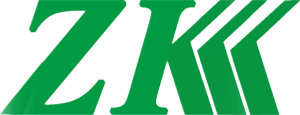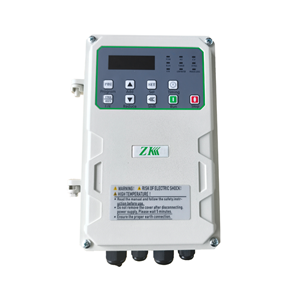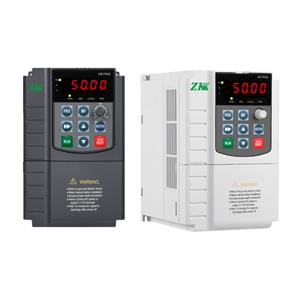The Development Prospects of Inverters
1. Introduction
Inverters, which convert direct current (DC) to alternating current (AC), have become an integral part of modern electrical systems. Since the development of the first commercial inverter, this technology has been evolving at a remarkable pace. In 2025, the prospects of inverters are extremely promising, driven by multiple factors such as technological advancements, growing global demand for energy efficiency, and the expansion of renewable energy applications.
2. Technological Advancements
2.1 Higher Efficiency and Power Density
One of the most significant trends in inverter development is the pursuit of higher efficiency and power density. Manufacturers are constantly researching and adopting new semiconductor materials. For instance, the use of wide - bandgap semiconductors like silicon carbide (SiC) and gallium nitride (GaN) is on the rise. Compared to traditional silicon - based semiconductors, SiC and GaN offer lower on - resistance, higher switching speeds, and better thermal conductivity. Inverters using these materials can achieve conversion efficiencies well over 98%, reducing energy losses significantly. This not only leads to more efficient use of energy sources but also allows for the design of smaller and lighter inverters, increasing their power density. For example, in photovoltaic (PV) systems, high - efficiency inverters can maximize the power output from solar panels, making solar energy more competitive with traditional energy sources.
2.2 Smart and Connected Features
The integration of smart and connected features is another major development in the inverter field. In 2025, inverters are increasingly equipped with advanced microcontrollers and communication interfaces. They can be connected to the Internet of Things (IoT) network, enabling real - time monitoring and control. Through mobile apps or web - based platforms, users can monitor the operating status of inverters, such as input and output voltages, currents, and power levels. In case of any malfunctions, the inverter can send instant alerts to the user or maintenance personnel. Moreover, smart inverters can adapt to changing grid conditions or load requirements automatically. For example, in a residential solar - plus - storage system, the inverter can communicate with the grid - tied system and the energy storage device. It can optimize the flow of electricity, selling excess power to the grid during peak - price periods and drawing power from the grid or the battery when needed, thus maximizing the economic benefits for the user.
2.3 Integration with Energy Storage Systems
As the need for stable and reliable power supply grows, especially with the increasing penetration of intermittent renewable energy sources like solar and wind, the integration of inverters with energy storage systems has become a key development trend. Lithium - ion batteries are the most commonly used energy storage devices in this regard. Inverters play a crucial role in managing the charging and discharging processes of these batteries. They can control the power flow between the energy source (such as solar panels), the load, and the battery. In off - grid applications, for example, the inverter can ensure a continuous power supply even when the sun is not shining or the wind is not blowing. In grid - tied systems, the combination of inverters and energy storage can help balance the grid, reducing the impact of power fluctuations caused by renewable energy generation variability.
3. Market Expansion
3.1 Growing Demand in Renewable Energy Applications
The renewable energy sector is one of the major drivers of inverter market growth. In the solar power segment, the installation of PV panels is increasing rapidly worldwide. Inverters are essential components in PV systems, as they convert the DC power generated by solar panels into AC power that can be used in homes, businesses, or fed into the grid. In 2025, the demand for solar inverters is expected to soar, especially in regions with abundant sunlight and supportive government policies for clean energy. For example, in countries like China, India, and the United States, large - scale solar power plants are being built, and the residential and commercial rooftop solar markets are also booming.
In the wind energy sector, inverters are used to convert the variable - frequency AC power generated by wind turbines into a stable frequency and voltage for grid connection. With the continuous expansion of wind farms, both onshore and offshore, the demand for high - power inverters suitable for wind energy applications is growing. The development of floating wind turbines in deep - sea areas also requires specialized inverters that can withstand harsh marine environments, further expanding the market for wind energy inverters.
3.2 Increasing Adoption in Industrial and Commercial Sectors
Industries are increasingly turning to inverters to improve energy efficiency and process control. In manufacturing plants, inverters are used to control the speed of motors, which are widely used in conveyor systems, pumps, and compressors. By adjusting the motor speed according to the actual load requirements, inverters can save a significant amount of energy. For example, in a textile factory, the speed of spinning machines and looms can be precisely controlled by inverters, not only reducing energy consumption but also improving product quality.
In commercial buildings, inverters are being used in heating, ventilation, and air - conditioning (HVAC) systems. Variable - speed drives controlled by inverters can adjust the speed of fans and pumps in HVAC systems, optimizing the energy use and maintaining a comfortable indoor environment. In large shopping malls, hotels, and office buildings, the installation of inverters in HVAC systems can lead to substantial energy savings over time.
3.3 Global Market Growth and Regional Trends
On a global scale, the inverter market is experiencing robust growth. The Asia - Pacific region is expected to be the largest market for inverters in the coming years. With a large population, rapid industrialization, and strong government support for renewable energy development in countries like China, India, and Indonesia, the demand for inverters in this region is soaring. In China, for example, the government has set ambitious targets for renewable energy installation, which is driving the growth of the inverter market.
North America and Europe are also significant markets for inverters. In these regions, a high awareness of environmental protection, the availability of incentives for clean energy projects, and the need for energy - efficient industrial and commercial operations are fueling the demand for inverters. The Middle East and Africa, with their abundant sunlight and the need to develop reliable power supply systems, especially in off - grid and remote areas, are emerging as promising markets for inverters, particularly those used in solar - powered water pumping and small - scale power generation systems. Latin America is also seeing an increase in inverter adoption, mainly driven by the growth of the renewable energy and industrial sectors in countries such as Brazil and Mexico.
4. Challenges and Solutions
4.1 High Initial Cost
The relatively high initial cost of inverters, especially those with advanced features and high power ratings, remains a barrier to wider adoption. The cost of research and development, the use of expensive semiconductor materials, and the complex manufacturing processes contribute to this high cost. To address this challenge, manufacturers are working on economies of scale. As the production volume increases, the unit cost of inverters is expected to decline. Additionally, continuous technological innovation is leading to more cost - effective manufacturing methods. For example, new manufacturing techniques for SiC and GaN devices are being developed to reduce production costs without sacrificing performance.
4.2 Grid Compatibility and Standards
With the increasing integration of inverters, especially those connected to the grid, ensuring grid compatibility and compliance with various standards has become a challenge. Inverters need to meet strict grid - connection requirements regarding power quality, voltage regulation, and frequency stability. Different regions and countries may have different grid standards, which requires inverter manufacturers to develop products that can adapt to these diverse requirements. To solve this problem, industry associations and standard - setting organizations are working on harmonizing grid - connection standards globally. Manufacturers are also investing in research to develop inverters with advanced control algorithms that can automatically adjust to different grid conditions and comply with various standards.
4.3 Competition and Market Saturation
The inverter market is becoming increasingly competitive, with a large number of manufacturers entering the market. This competition, while beneficial in terms of driving innovation and cost - reduction in the long run, may lead to short - term challenges such as price wars and potential market saturation in some segments. To stay competitive, companies need to focus on product differentiation. This can be achieved through continuous research and development to offer unique features, such as higher efficiency, better grid - integration capabilities, or enhanced smart - control functions. Additionally, providing excellent customer service, including installation, maintenance, and technical support, can also help companies stand out in the market.
5. Conclusion
In conclusion, the future of inverters in 2025 and beyond looks extremely bright. Technological advancements will continue to drive the development of more efficient, smart, and integrated inverters. The growing demand for renewable energy, energy efficiency in industrial and commercial sectors, and the expansion of global markets will provide ample opportunities for the inverter industry to thrive. Although challenges such as high initial cost, grid compatibility, and competition exist, solutions are being actively explored. As a result, inverters will play an increasingly crucial role in the global transition to a more sustainable and energy - efficient future.




